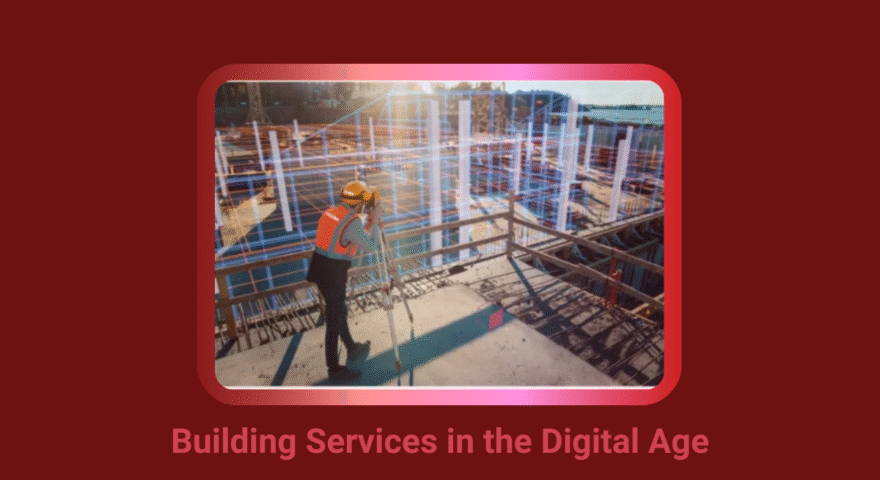How has the building services industry changed in the digital age?

Whilst building services engineering may only have been recognised as a specific discipline during the 20th century, the roles it encompasses have been an integral part of the construction and engineering industry for centuries. Going all the way back to ancient Egypt, the design and installation of wind catchers as a form of air conditioning is just one example of what could be considered the earliest building service engineers at work.
Constantly challenged to make improvements in performance and efficiency, along with an increased focus on sustainability, new digital technologies have given building services engineers access to tools and processes that have revolutionised many aspects of their work.
10 digital technology trends in building services engineering. The digital age has had a huge impact on the way building services engineers carry out their job and many new skills have had to be learnt to adapt to the new technology. The following are just some of the technologies that now play a significant role in engineering.
Building Information Modelling (BIM)
BIM has revolutionised the way building services are designed, coordinated and managed. By creating detailed models of buildings and their infrastructure, BIM enables data to be managed more efficiently and for engineers to collaborate and share information more easily with other professionals involved in the project.
Augmented Reality (AR) and Virtual Reality (VR)
AR and VR technologies are being increasingly used by building service engineers for visualisation, maintenance and training purposes. They allow professionals to experience virtual models of a building and to interact with equipment and systems before construction or installation. This can help facilitate better decision making and improve the overall understanding of complex designs or equipment.
Mobile Technology
The use of smartphones and tablets has become second nature to most of us, but there is no denying that mobile technology has played a significant role in engineering. These devices eliminate the need for paper-based documentation, allowing engineers to access drawings and specifications on or off site. They also make communicating and collaborating a much easier and more efficient process.
Drones
Drones are increasingly being used to inspect sites and collect data. They are especially useful for examining high risk or hard to reach areas. The images and data captured by drones can be used by engineers to make more informed decisions to ensure the accuracy and efficiency of design and maintenance processes.
Artificial Intelligence (AI) and Machine Learning
Artificial Intelligence (AI) and Machine Learning are playing increasingly significant roles in building services engineering. AI algorithms can analyse vast amounts of data to predict equipment failures, optimise energy consumption, and improve maintenance schedules. Machine Learning models can also help in designing more efficient building systems by learning from historical data and identifying patterns that humans might miss. One of the ways engineers use AI/Machine Learning is to streamline repetitive processes during the design stage. These technologies not only enhance the performance of building systems but also contribute to sustainability goals by reducing waste and energy consumption.
Photogrammetry
Photogrammetry is a technological science that creates accurate 3D scans of physical objects. The images and measurements can then be used to create 3D models of existing buildings and infrastructure which can be leveraged by engineers to improve the design or retrofitting of relevant systems.
Internet of Things (IoT) and Smart Sensors
Sensors on equipment and materials allow engineers to collect data easily and efficiently. Wearable tech can also enable hands-free data collection. Combined with cameras, this monitoring technology can relay real-time information to inform asset management systems of the condition and effectiveness of a particular piece of equipment or system.
Digital Twin Technology
Digital twin technology involves creating a virtual replica of a physical building or system. This digital twin is continuously updated with data from the real-world counterpart, allowing engineers to monitor, analyse, and optimise building performance in real-time. Digital twins can be used for predictive maintenance, energy management, and even in the planning of renovations or expansions. By providing a comprehensive view of building operations, digital twins enable proactive management and can significantly reduce operational costs.
Smart Building Management Systems (BMS)
Smart Building Management Systems (BMS) integrate various building systems, such as HVAC, lighting, security, and fire safety, into a single, cohesive platform. These systems use advanced software and analytics to monitor and control building operations more efficiently. Smart BMS can adjust lighting and temperature based on occupancy, detect drops in system performance, and provide actionable insights to facility managers. This integration leads to enhanced energy efficiency, reduced operational costs, and improved occupant comfort.
Sustainable and Green Technologies
Digital technologies are also driving the adoption of sustainable and green building practices. Advanced energy management systems, powered by AI and IoT, enable precise control over energy use, reducing waste and lowering carbon footprints. Renewable energy sources, such as solar panels and wind turbines, can be integrated into building management systems to optimise their use. Additionally, digital platforms can track and report on sustainability metrics, helping buildings achieve green certifications and compliance with environmental regulations.
New technologies are changing engineering practice and in turn, the behaviour and skills of engineers. There are many benefits of automated systems for design and analysis of equipment and processes within buildings, but the human element is still required to facilitate and optimise the use of these technologies. However, it is necessary for engineers to adapt and evolve their skills to a new way of working alongside digital technology to solve engineering challenges and processes. As the digital age continues to advance, the role of building services engineers will continue to evolve as they incorporate these technologies into the tasks they perform. Every new development transforms the way engineers work by providing them with advanced tools that enhance collaboration, efficiency and effectiveness throughout the design, construction and maintenance phases of a building project.
The integration of these digital technologies in building services engineering, makes buildings more efficient, sustainable, and comfortable. As these trends continue to evolve, the industry must stay abreast of the latest advancements to leverage their full potential. Embracing these technologies not only enhances building performance but also contributes to a more sustainable and connected future.
At BSE|3D, we are committed to staying at the forefront of these technological advancements. Our expertise in digital solutions for building services engineering ensures that your projects are not only cutting-edge but also future proof. Contact us today to learn more about how we can help you harness the power of digital technology in your next project. mail@bse3d.com
Talk to Our Expert Team
If you would like to learn more about the range of services we offer, please get in touch for an informal discussion about your needs and requirements.






